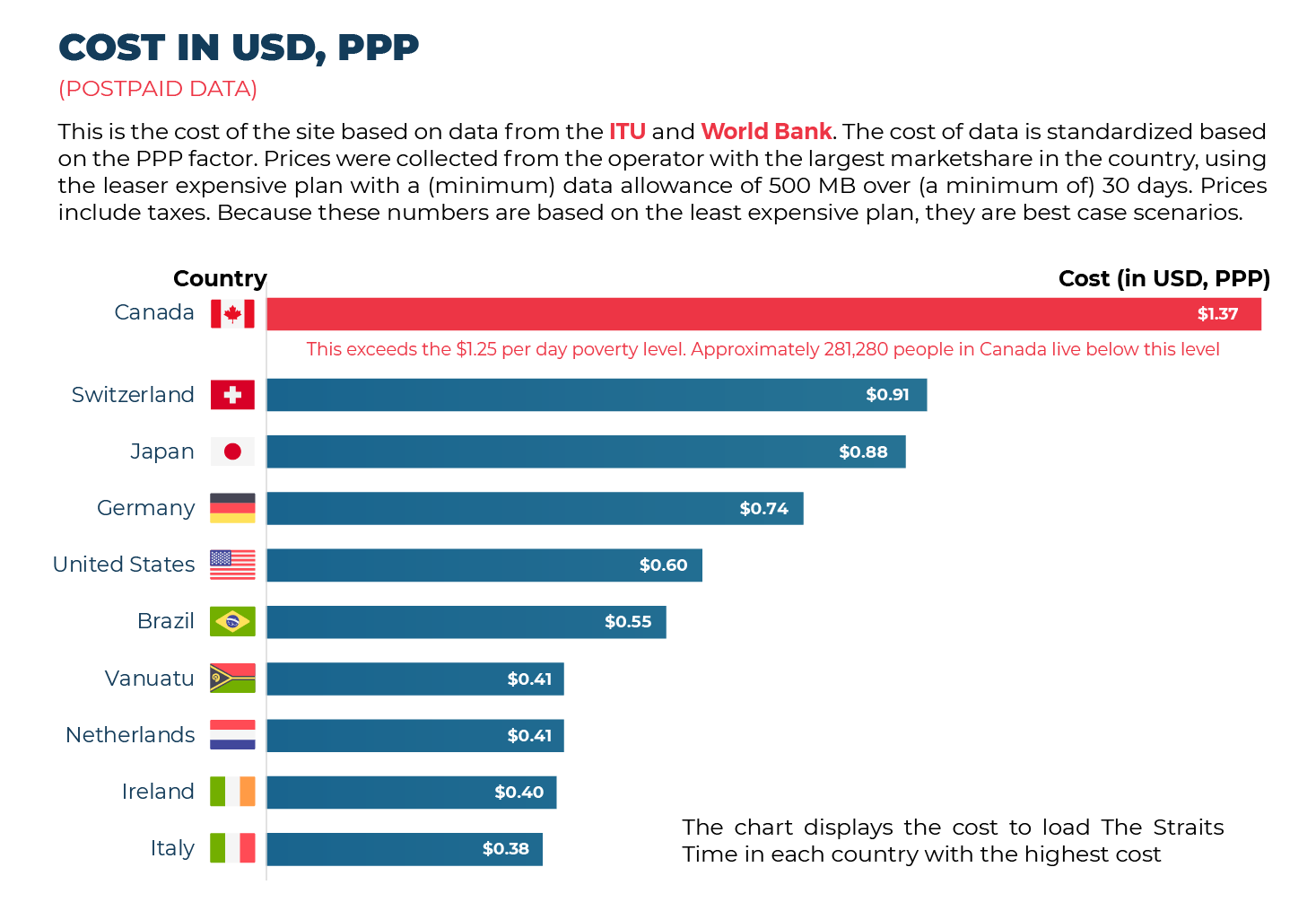Save Internet Bandwidth for your users!

Web developers and technology leaders love to build new features and products on their websites, which makes perfect sense, however a critical component that may be hidden under the rug is that they forget internet bandwidth costs their end users need to pay. There needs to be more discipline in analysing which countries your users are accessing your website from and how much is their bandwidth costs in terms of dollars and actual bandwidth. Websites are getting larger and larger in terms of size each day with more content being added. Especially companies that are looking to expand into developing countries, you need to consider the amount of data that your users will need to download. Based off the latest October 1, 2019 run of HTTP Archive, the median site size is 1950kb on desktop and 1752kb on Mobile.
Website performance optimization must be at the forefront of every web developers mind, not just for faster loading times but to also ensure the page sizes are reduced so end users can reduce their internet bandwidth consumption and cost.
To illustrate the impact of page size and bandwidth costs across different countries let’s take a well known online news website The Straits Times. Below is a chart generated by https://whatdoesmysitecost.com, a great website created by Tim Kadlec where you can see the cost of your website to your end users.

The chart displays the cost to load The Straits Time in each country with the highest cost country listed first. In this case you can see that on a postpaid plan it will cost $1.37 USD in Canada to load the page. This is quite high and exceeds the $1.25 per day poverty level. This gives you perspective of how much your site costs your end user to load.
Often times it is difficult to put ourselves in the shoes of the end users and experience your website in the same environment and conditions. Hence, it’s often worth getting hands on experience by visiting the city from where your users are coming from and receiving real feedback and experience for yourself. However, if that is not possible using RUM data is just as valuable as you can analyse the real user experience data.
In my recent trip to Manila, it was interesting to see that internet experience for the locals was not the best. By talking with many local online media and eCommerce companies, i heard the recurring complaints around their internet infrastructure. Often issues with slow connections and sometimes not having any internet access at all due to electricity issues. Considering most people access the internet through capped mobile plans, it is imperative that web developers need to consider webpage sizes that need to be downloading by these locals to visit your website.
Also if you are currently using a CDN to serve your website to your end user, then optimizing your website and compressing images, JavaScript, CSS, Fonts and videos on a continual basis will also reduce your CDN bill each month, leading to a win-win situation.
One of our online media clients theAsianparent were trying to solve this exact problem. “Visitors from places with slower internet speeds were having issues with loading our image-intensive articles. If the pages took too long to load, it would drive them to other sites to consume the content they wanted,” said Alvin De Cruz, theAsianparent’s Head of Engineering. “This would cause us to lose visitors in Indonesia, India and Philippines where internet connection speeds vary greatly.” Dexecure was able to offload 8.8 TB of the bandwidth, thereby significantly easing the load for their end users. For the full details of our web performance optimization results for theAsianparent, you can read our official web performance case study right here.












 Use Dexecure to automatically
optimize your website
Use Dexecure to automatically
optimize your website 